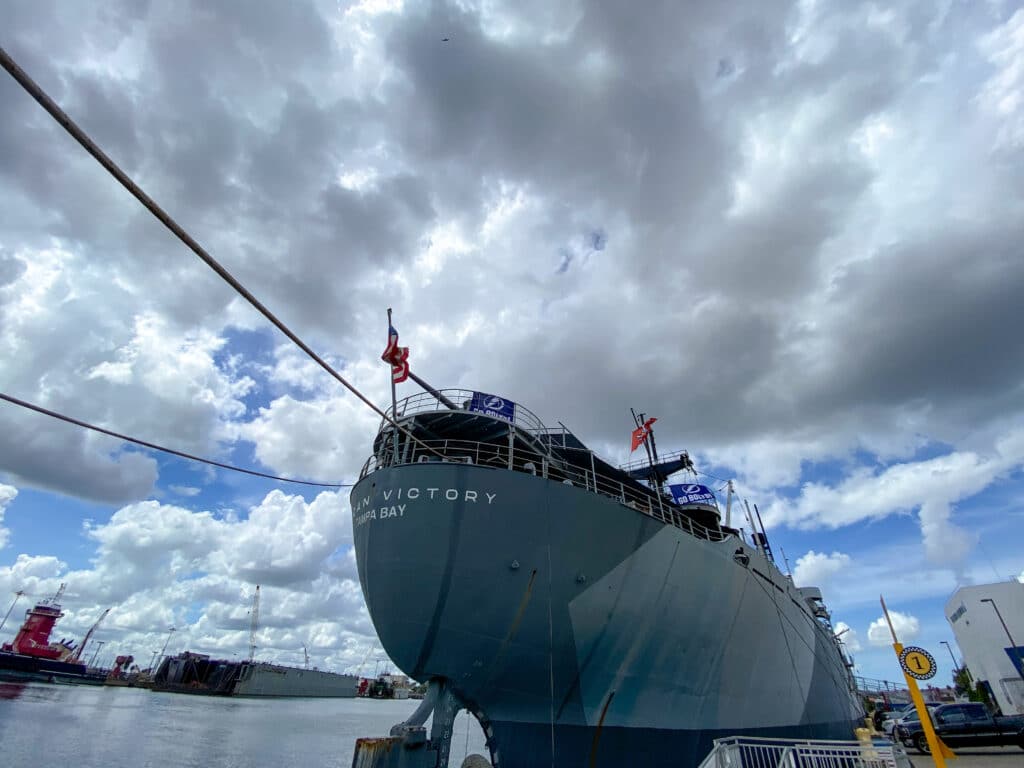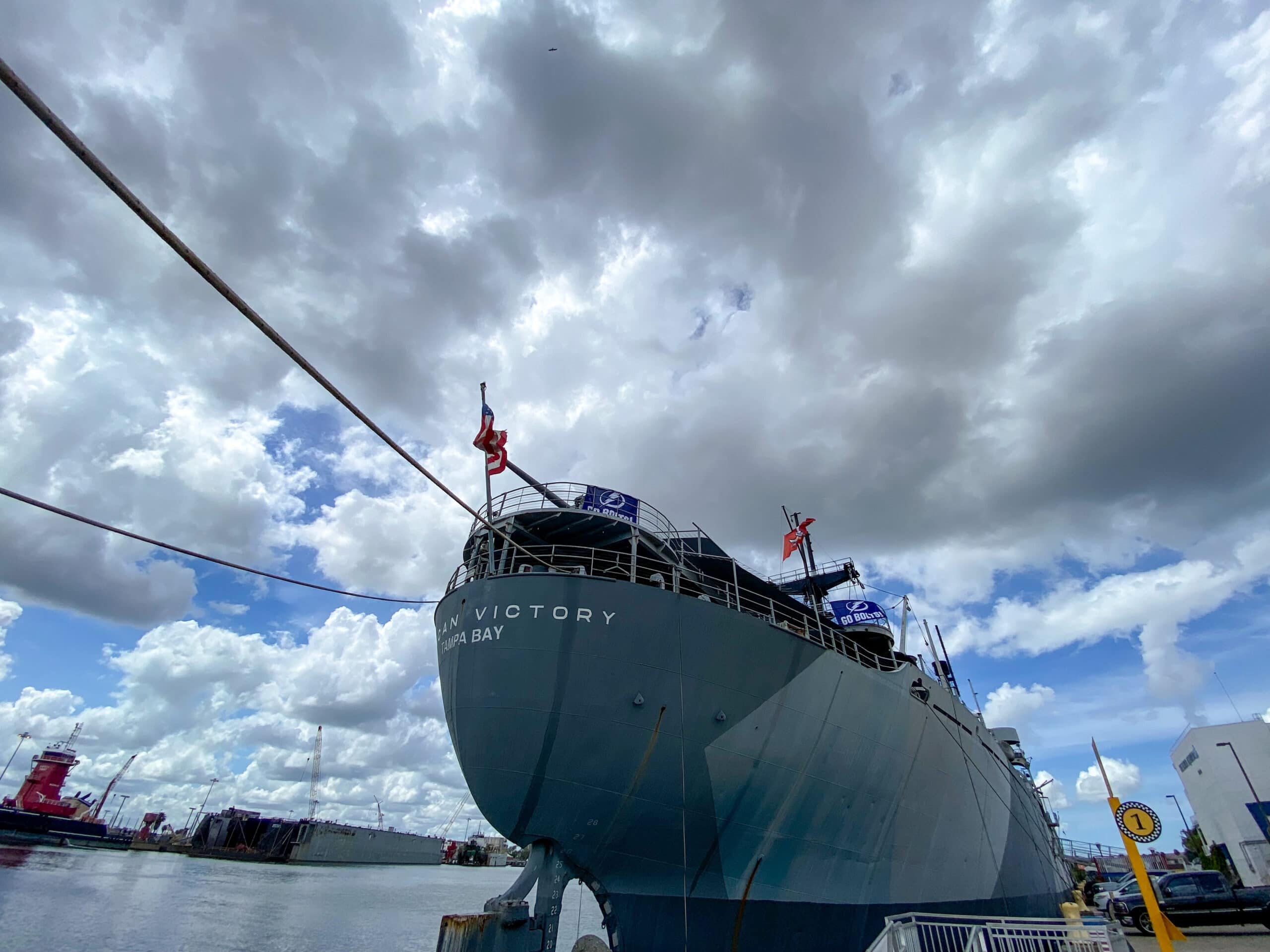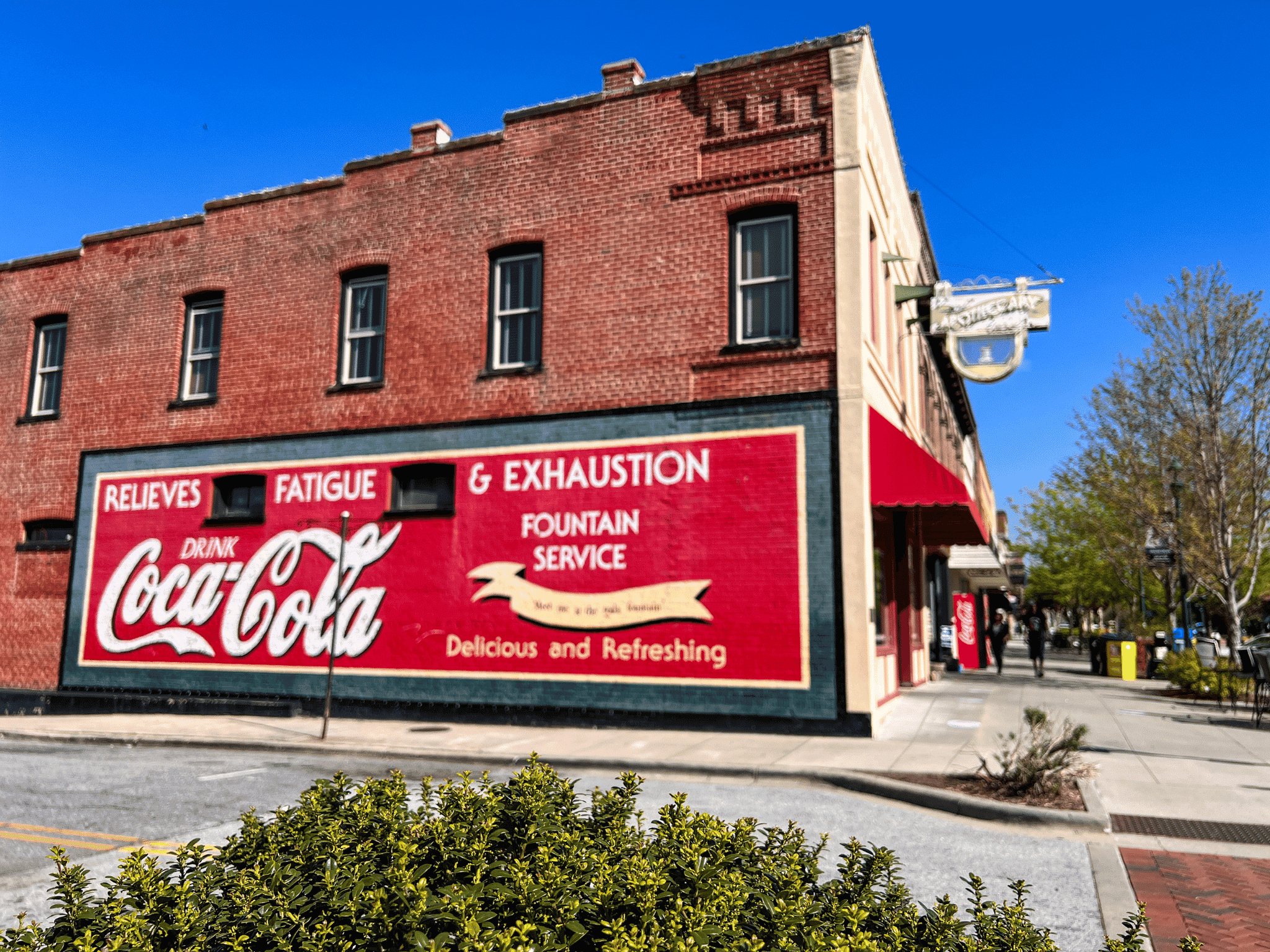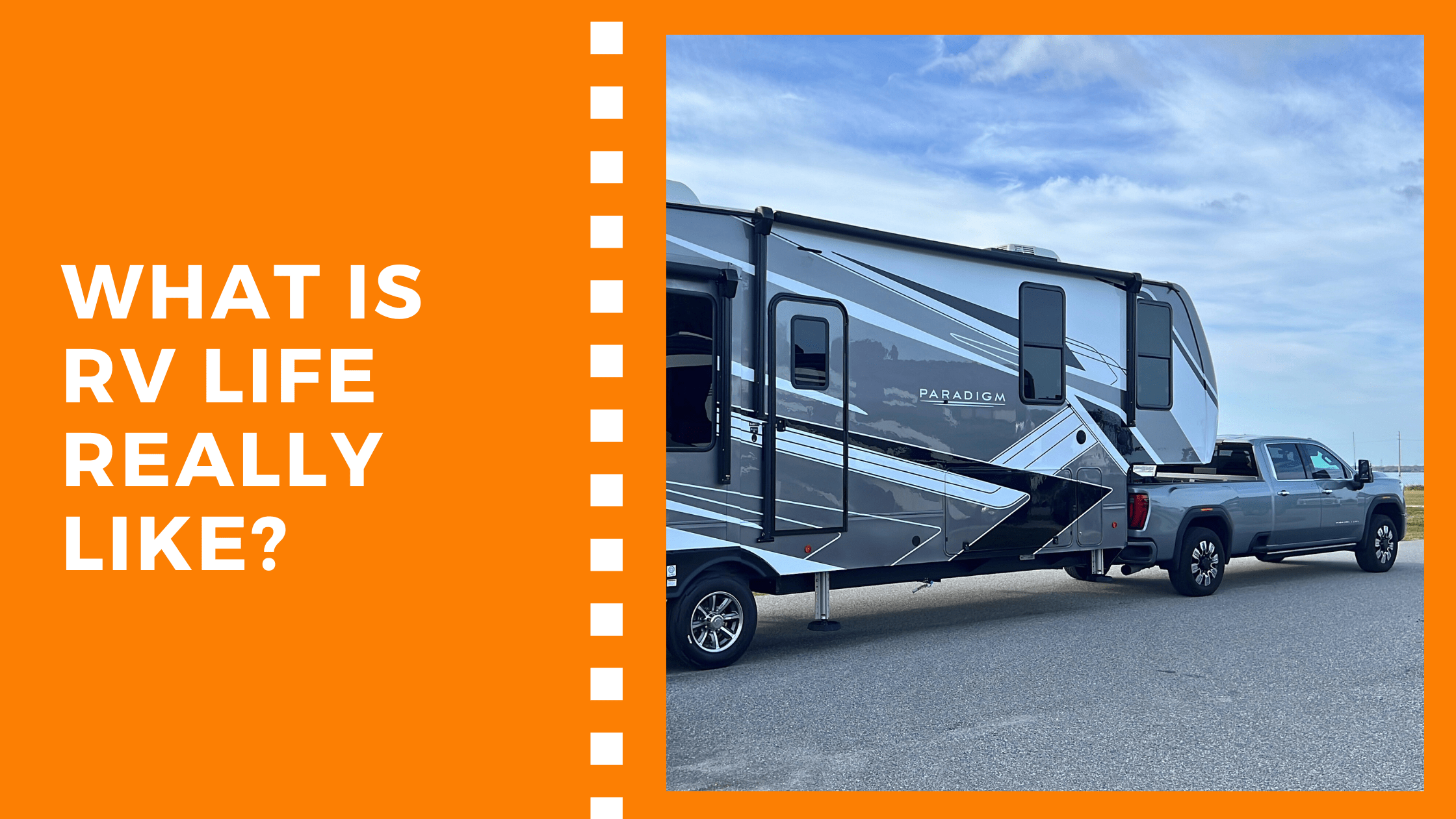The officers and men of the Merchant Marine, by their devotion to duty in the face of enemy action, as well as natural dangers of the sea, have brought us the tools to finish the job. Their contribution to the final victory will be long remembered. – General Dwight D. Eisenhower on National Maritime Day, 1945
Disclosure: Some links on our site are affiliate links. If you purchase a linked item, we will make a commission, at no extra charge to you.
As the United States entered World War II, we had the makings of a great merchant fleet. But lethal German U-boats (submarines) prowled shipping lanes. American merchant ships were easy prey to the Germans. Known as Liberty ships, these vessels proved to be too slow. And too small to carry the large amount of supplies and equipment needed to win the war. In 1943, a new ship-building program began. These would be faster, larger, and capable of carrying more cargo. These were the Victory ships.
Designed in early 1942, the Victory ship was an enhancement of the Liberty ship. To be less vulnerable to U-boat attacks, the Victory ships made 15 to 17 knots. 4 to 6 knots faster than the Liberty’s with a longer range. A more modern, efficient steam engine increased the ships speed. While the Liberty engines produced 2,500 hp, Victory’s engines produced 6,000 hp. Additionally, electrical powered auxiliary equipment proved more efficient over steam-driven machinery. Welding the Victory’s hull instead of riveting. Widening the frames by 6 inches, from 30 to 36 inches. These improvements made the hull less stiff. This helped prevent hull fractures that a few Liberty’s developed. Increasing self-sufficiency of the Victory ships, each had mast, boom, and derrick cranes. These enabled each ship to load and unload its cargo without dockside cranes or gantries.
An armament of several large-caliber guns defended the ship. One 5-inch/38 caliber stern gun (rear of the ship) for use against U-boats and surface ships. Two bow-mounted (front of the ship) 3-inch/50 caliber guns. And eight 20 mm anti-aircraft cannons. These were manned by United States Navy Armed Guard personnel. The establishment of the NAG was due to the shortage of escort vessels. These gun crews provided a modicum of defense against the constant danger of attack. Occasionally, gun crews cross-trained merchant crews in the guns operation. This was relevant in the event the NAG were killed or injured.
A total of 534 of a planned 615 ships were built at a cost of over $2.5M each in 1943, or a little under $36M today. Of the hundreds built, only three fully operational Victory ships remain. The American Victory, berthed in downtown Tampa, Florida, is one.
Visiting the ship is a surreal experience. Walking atop the ship or down the narrow passageways gives a small glimpse into life aboard the ship. Today, air-conditioned rooms give respite from the heat and humidity. But, during her time, the crew had no such reprieve. One can imagine the heat being oppressive. A large iron ship, driven by steam, with very little ventilation.
At first glance, her size is unimpressive. Not small at approximately 450 feet long, but not as large in comparison to ships of today. A typical crew was 62 civilian merchant sailors and 28 Naval Guard personnel. This made the living quarters cramped. Walking through the ship, you realize the claustrophobia-inducing size more clearly.
Entering near midship, an informative display details the history of American Victory. Also, stories of some of the men who crewed her during her service to our nation.
The SS American Victory was built at the California Shipbuilding Yard in Los Angeles, CA. in a mere 55 days, then delivered to the War Shipping Administration (WSA) on 20 June, 1945. She saw brief service in the Pacific theater during the closing months of World War II. She would again serve during both the Korean and Vietnam Wars. American Victory carried ammunition and other cargo from West Coast ports to Southeast Asia. Then ferried cargo, equipment, and troops back to the United States after the war ended.
During World War II, she took cargo from various ports along the west coast to Manila in the Philippines. Her remaining cargo was off-loaded at Shanghai, China. November, 1945 found American Victory in Calcutta, India and Port Said, Egypt. Loading military cargo for its return trip to the United States. Arriving in New York in January 1946, American Victory completely circumnavigated the globe. Her first of two times.
Post-World War II, she carried foodstuffs and machinery to Europe, Russia, and the Near East. She was chartered as part of the Marshall Plan, the Post-War Reconstruction of the European continent. By January 1947, the Black Sea had already iced up. The ice was blocking her and other ships from departing Odessa, Ukraine. Not wanting to wait for the Soviet icebreaker, Captain A.D. Cushman used her as an icebreaker. Backing up and ramming the sea-ice, she cleared a path for both her and the other vessels.
She laid up in the Hudson River Reserve Fleet until being chartered again. This time to serve during the Korean War. Afterward, she was again laid up in the Sabine River Reserve Fleet of Texas.
There was a plan in 1963 to convert fifteen Victory ships into “forward depot” vessels. American Victory was one. Loaded with materials, and prepositioned near potential flashpoints. There, they could provide American forces with supplies. In early 1966, the plan was canceled after only three conversions.
Reactivated in 1966, she ferried military equipment to American forces in South Vietnam. She served in this capacity until 1969. Once again deactivated, her next stop was the James River Reserve Fleet in Lees Hall, Virginia.
Remaining here until 1985, American Victory underwent a $2.5M renovation. This determined the needs to reactivate mothballed Victory ships. Being brought to fully operational status, she sailed for only 26 hours. Once again, she was deactivated to the Naval Reserve Fleet.
Set to be scrapped in the late 1990s, American Victory was rescued by preservation efforts. Towed to Tampa, Florida, she started her new life as a museum ship and memorial on 16 September 1999. Extensive restoration efforts brought her back to operational status. American Victory is also listed on the National Register of Historic Places.
Today, the Victory ship American Victory serves as a museum. Also, as a memorial to the men and women who served during both war and peace. Carrying ammunition and military equipment to theaters of war to aid in the victory. Bringing our brave service members back home afterward. And humanitarian supplies to war-torn continents, this ship has many stories to tell. Take the time to visit. Listen to her stories, before they are forgotten.










